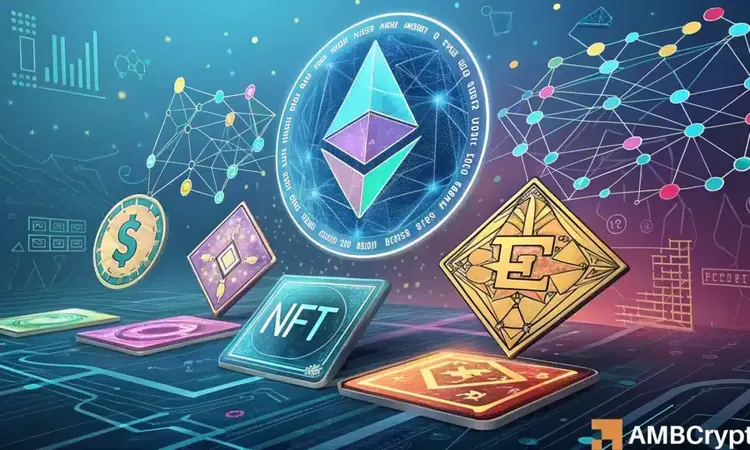
Hyperliquid NFTs Stumble as HYPE Plummets 18% – Can They Bounce Back?
2025-03-31
Author: Yan
In the ever-evolving world of digital assets, Hyperliquid NFTs have shown surprising resilience amidst market turbulence. Despite the native token, HYPE, plunging 18% recently, the NFTs linked to this protocol, such as Hypers and Mechacats, seem to have remained largely undeterred. However, the overarching trend indicates that their adoption is still in its infancy.
HYPE's Plunge, NFTs Hold Steady
The latest weeks have not been kind to HYPE, which has seen a steep decline in its value. Surprisingly, the associated NFT collections have maintained steady trading activity. Current floor prices show Hypers hovering around 9.85 and Mechacats at 10.50, showcasing a surprising stability amidst the market chaos. Yet, static prices alone do not guarantee sustained strength in the long-term.
A crucial factor behind the slow adoption rate is the low number of users transitioning to the EVM, which restricts liquidity and diminishes overall demand in the marketplace. Traders considering involvement in these projects face a dual-edged sword: potential profit from early adoption clashing with the reality of a disengaged ecosystem.
Hypers and Mechacats: A Niche Appeal
While Hypers and Mechacats rank as leading NFT projects with trading volumes of 77,146 and 25,720 respectively, their trajectory is hindered by the current liquidity constraints. The small user base engaging in these collections primarily drives speculative interest instead of utility-based demand, contributing to the current stagnation.
Moreover, the slowdown of NFT adoption across the broader cryptocurrency landscape—where many traders are turning their focus to fungible tokens—adds another layer of complexity. If Hyperliquid cannot entice a significant increase in user participation, the growth potential for Hypers and Mechacats may find itself at a standstill.
The Path Forward: Opportunities and Challenges
For the Hyperliquid NFT ecosystem to truly flourish, the fostering of a wider user base is essential. The biggest hurdle exists in bridging more users to the EVM; without this, liquidity will remain a critical issue, stunting any chance of price appreciation for collections like Hypers and Mechacats.
To catalyze user engagement, Hyperliquid could consider implementing incentive programs which might include staking rewards, governance benefits, or innovative integrations within their platform. Furthermore, establishing partnerships with existing NFT marketplaces could broaden exposure and appeal to a larger audience.
The overarching sentiment in the NFT market also plays a pivotal role. Should the sector experience a resurgence, there could be renewed interest in Hyperliquid's digital assets, potentially revitalizing this niche market. Conversely, failure to expand the ecosystem could result in diminishing returns for existing investors.
For the time being, Hyperliquid NFTs are a speculative avenue, brimming with potential—but their success hangs in the balance, heavily reliant on increased user engagement and strategic enhancements within the protocol. Will the tides turn in favor of HYPE and its NFTs, or will they be swept under the rug of an ever-changing market? The next few months will be critical.



 Brasil (PT)
Brasil (PT)
 Canada (EN)
Canada (EN)
 Chile (ES)
Chile (ES)
 Česko (CS)
Česko (CS)
 대한민국 (KO)
대한민국 (KO)
 España (ES)
España (ES)
 France (FR)
France (FR)
 Hong Kong (EN)
Hong Kong (EN)
 Italia (IT)
Italia (IT)
 日本 (JA)
日本 (JA)
 Magyarország (HU)
Magyarország (HU)
 Norge (NO)
Norge (NO)
 Polska (PL)
Polska (PL)
 Schweiz (DE)
Schweiz (DE)
 Singapore (EN)
Singapore (EN)
 Sverige (SV)
Sverige (SV)
 Suomi (FI)
Suomi (FI)
 Türkiye (TR)
Türkiye (TR)
 الإمارات العربية المتحدة (AR)
الإمارات العربية المتحدة (AR)